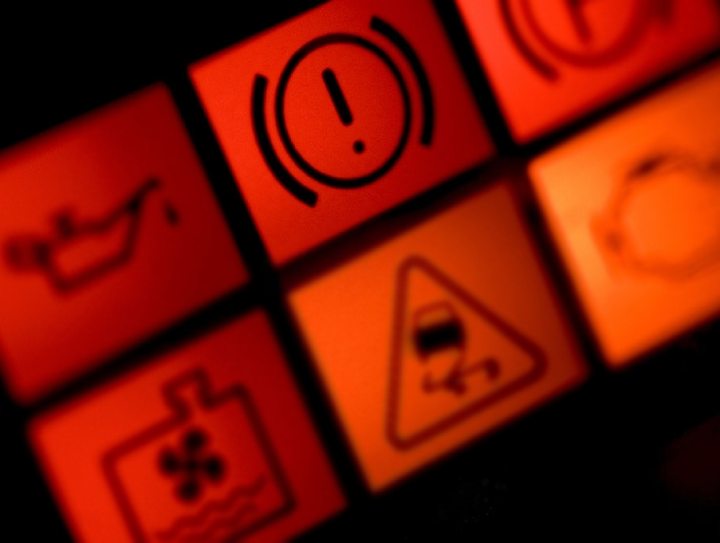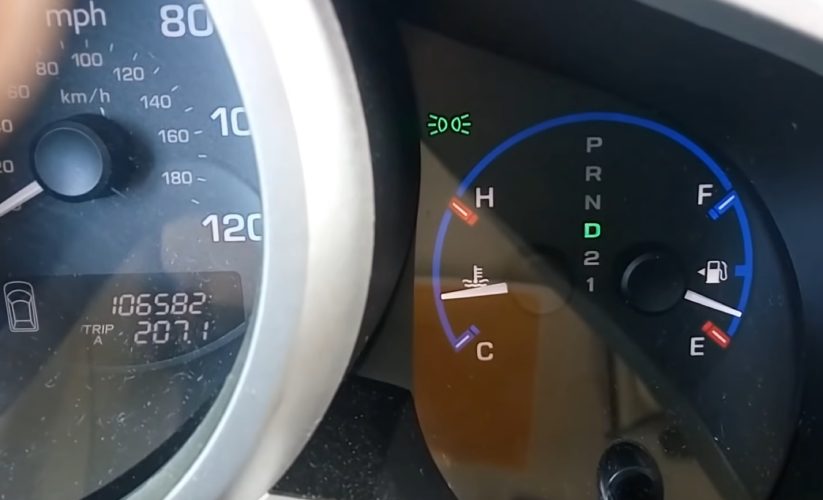Having your “Emissions System Problem” message on the dashboard and the engine light on can make you feel intimidated.
An Emissions System Problem message on your dashboard is a common problem on Honda Pilot cars, which generally can be fixed by changing your fuel injectors. The warning message usually shows up around 40,000 – 60,000 miles, and sometimes even earlier. While there has been no recall from Honda addressing the problem yet, dealerships are aware of the issue.
- How do you fix the Emissions System Problem on a Honda Pilot?
- What are signs the of faulty fuel injectors?
- Will cleaning my fuel injectors work?
- How long is Honda emissions warranty?
- Is it safe to drive with Emissions System Problem message on dashboard?
- How much does it cost to fix an Emissions System Problem?
- Can you prevent the Emissions System Problem warning message?
- Conclusion

When connecting the car to an OBD-II reader, the ECU usually sets one of the following fault codes, P0430 or P0420.
Usually, those fault codes will indicate a problem with the catalytic converter; however, if the fuel injectors are replaced as soon as the warning message shows on the dashboard, the converter might not go bust.
The P0430 fault code will show a faulty oxygen sensor behind the catalytic converter, but here is what happens.
There are two oxygen sensors at each end of the converter, running on the same voltage. While the engine is running, the catalytic converter should be cleaning up the exhaust, keeping the voltage between the two sensors the same.
All injectors should be spraying the same amount of fuel, allowing the ECU to determine the amount of fuel supplied based on the front oxygen sensor. However, if the fuel injectors are not spraying the same amount of fuel, the ECU might over fuel, making up for the lack of fuel.
As a result, the catalytic converter gets over-saturated with fuel, throwing a P0430 fault code.
How do you fix the Emissions System Problem on a Honda Pilot?
While some mechanics might try to fix the issue with an ECU reset, the problem will usually appear again after a couple of days.
As discussed already, if taking into consideration the fault codes, some mechanics will quickly jump to the conclusion that your car needs a catalytic converter replacement. However, this will not fix the issue completely. After a couple of thousand miles, the message will appear again.
A further investigation will show that the actual problem lies with the fuel injectors. Although there has been no recall from Honda addressing this issue, dealerships are aware of it.
What are signs the of faulty fuel injectors?
To be absolutely sure that faulty fuel injectors cause your problem, here are some of the common signs of fuel injectors going bad.
The car has a rough idle
While in traffic or at a stoplight, you might feel the car shake and sputter. The fuel injectors might not be delivering the right amount of fuel, causing the engine to vibrate.
Poor fuel economy
Your MPG can drop due to faulty injectors, as the ECU is asking for more fuel to be delivered but does not receive it. The less fuel gets to the combustion chamber, the worse your MPG will be. If you would like to read more about what MPG is, check out my article on what DTE means.
Check Engine Light
As the injector stops spraying the right amount of fuel, your Check Engine warning light will come on, indicating a problem with the engine. As soon as you the Emissions System Problem message, you probably notice the Check Engine light is on as well.
Engine misfire
You may notice a delay when you hit the gas pedal or misfires. As the fuel injectors cannot deliver enough fuel, the mix of fuel and air in your combustion chamber will become unbalanced causing your engine to misfire.
Difficulties when starting the car
If the fuel injectors cannot deliver enough gasoline to the engine, you might have a hard time starting the car.
Will cleaning my fuel injectors work?
Cleaning your fuel injectors might make the warning message go away for a couple of weeks at most, as this still does not fix the underlying issue. I recommend having your injectors replaced straight away.
How long is Honda emissions warranty?
In November 2020, Honda released a Technical Service Bulletin (TBS), communicating to their dealerships the problem, information on how to identify and fix it, and extending the warranty to 10 years from the date of purchase or 150,000 miles, whichever comes first.
Is it safe to drive with Emissions System Problem message on dashboard?
The answer to this question is not as simple as yes or no. It depends on how long ago the message showed up on your dashboard. If you just got the message and didn’t notice any difference when driving the car, you might keep driving it for a couple more days until you get it to a mechanic.
However, I don’t recommend this, unless you absolutely need the car. Driving with this warning message on, might cause further damage to the catalytic converter as discussed before.
If you have been driving the car already for a while with the warning message on, I recommend not driving the car anymore until you take it to a dealership.
How much does it cost to fix an Emissions System Problem?
If you get this message on your Honda Pilot, I recommend having the car fixed by a dealer, as the warranty might cover the repair cost. As mentioned already, Honda is aware of this common issue, and they have extended the warranty on the Honda Pilot model.
However, if your car has done more than 150,000 miles and the dealer will not cover the repair cost, you might have to pay from your own pocket.
Replacing the fuel injectors on a Honda Pilot will cost around $300 for parts and $300 – $400 for labor on average. If you are good at following instructions, you might save on the labor costs and replace the fuel injectors yourself.
Can you prevent the Emissions System Problem warning message?
While some mechanics recommend always using premium gasoline for the higher octane, there is no way to prevent this problem on a Honda Pilot. According to (), engines running on higher octane gasoline will be more efficient and emit less emissions.
Using premium fuel will only delay the issue, becoming a problem if your car runs out of the warranty limits.
Conclusion
If you get the dreaded Emissions System Problem message, I recommend driving your car right away to a dealer and have it inspected. Delaying this will only make things worse and can result in further damage to the catalytic converter.
My name is Jeffrey Williams and I have been a car mechanic for over 35 years. I am currently working NYC Auto Repair Shop, in New York City and recently developed a strong passion about blogging. I decided to put together this blog where I will try and answer the most commonly asked questions I get on a daily basis from my customers.









